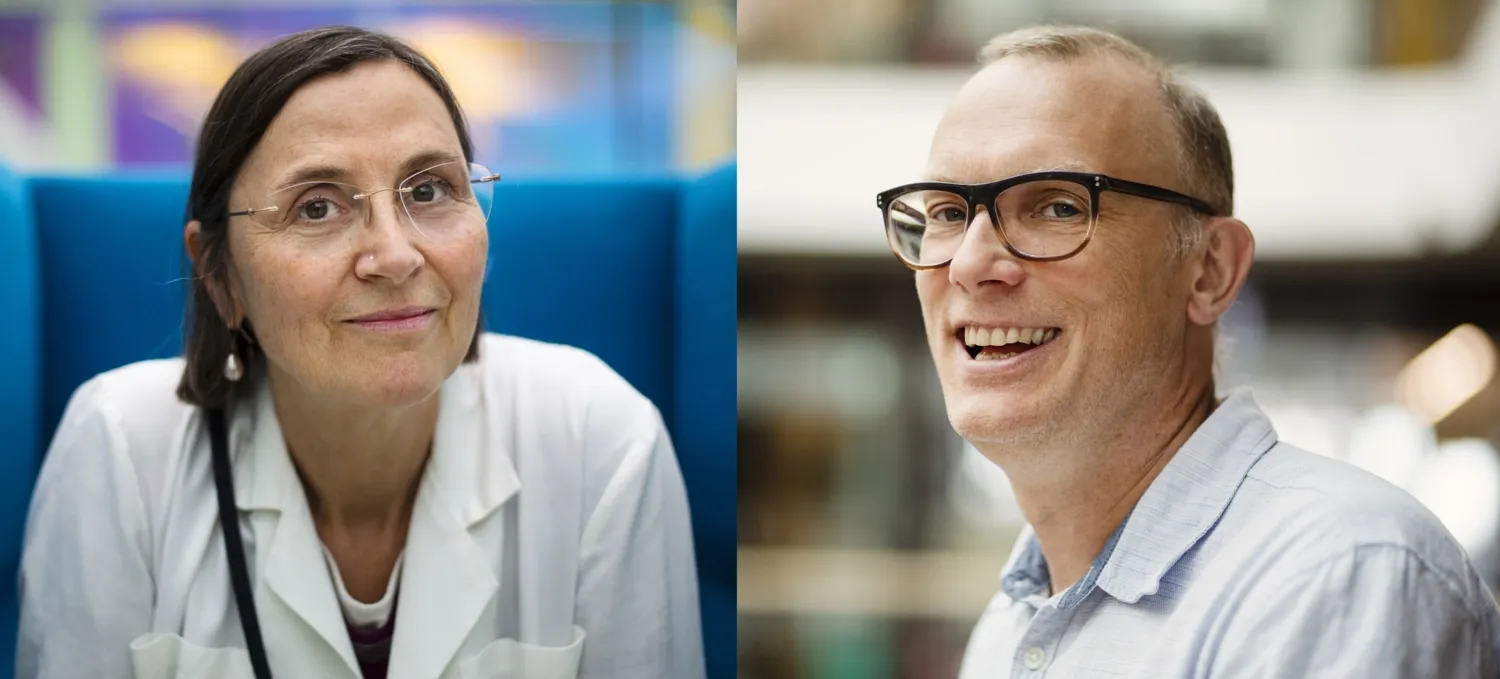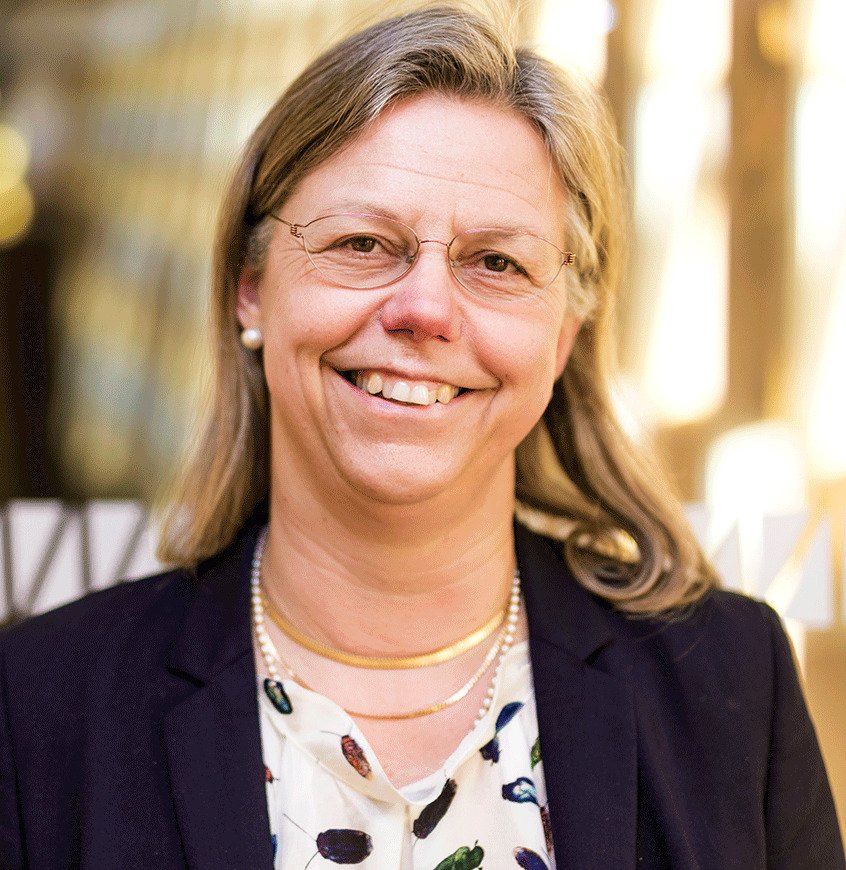New titles for the hidden specialists behind KI's research

They work with highly specialised equipment for facilities that they have often built up themselves. Although not themselves researchers, their expertise, experience and international contacts render them indispensable for research at KI. A year ago, new titles were created for this important category of employee.
Last year, KI was the first university in Sweden to introduce the professions of “research infrastructure specialist” and “senior research infrastructure specialist” for employees who focus on technical and methodological development. Stockholm University has since followed suit.

“A number of universities in Sweden have asked me to tell them about what we’ve done here,” says Professor Karin Dahlman-Wright, who led the initiative at KI. “Universities need new career paths to attract and retain people with specialist skills for today’s technology-intensive research.”
Sylvie le Guyader is one of KI’s 25 senior research infrastructure specialists and head of a laboratory for advanced light microscopy, the Live Cell Imaging Core Facility (LCI), at the Department of Medicine in Huddinge, where she also holds training courses in the use of the technique. She says that the title is welcome acknowledgement of her work.

“We tend to get called engineers or technicians. The new title shows what we mean to KI, I think. With the technology we provide we’re like a skeleton, a load-bearing structure behind the university’s research.”
The LCI is on Karolinska Institutet’s southern campus in Flemingsberg. The laboratory is unlit, the darkness ensuring that the samples under the light microscope’s lamps and lasers appear in particularly sharp detail. Here, researchers from a wide range of fields sit in concentrated silence at eye-pieces and screens studying all kinds of samples, including fixed or living cells.
“Our light microscopy enables researchers at KI to study a whole beating heart, for instance, but they can also see individual molecules inside cells,” says Dr Le Guyader.

Passionate about education
Sylvie le Guyader developed an interest in light microscopy when she was a biologist studying the development of the zebra fish eye for her PhD.
“Many researchers see technology as a necessary evil for their research, but I discovered that I enjoyed it. Light microscopy continued to be an important part of my research and suddenly I was the one everyone in the lab turned to with questions,” she says.
It eventually became her main occupation. In 2009 she was invited to build a core light microscopy facility in Flemingsberg. Later, when she was able to take on two employees, she started a course to train researchers and core facility colleagues how to use the technique. The training side is what engages her most these days.
“I think there are many people who, like me, appreciate being able to work in a stimulating research environment without wanting to pursue a research career.”
Expert in crystallising proteins
Her colleague in Solna is Martin Moche, who apart from being senior research infrastructure specialist is also a crystallographer, or structural biologist. He is a physicist who began his career studying particles at Umeå University.

“Everything was incredibly small and quantum theoretical. It felt irrelevant. I was really happy to transfer to working with proteins, which are enormous by comparison.”
Proteins are the fundamental building blocks of life with a wide range of functions. Seeing their three-dimensional shape makes it possible for scientists to do many things, such as evaluating the effectiveness of a new drug.
The Protein Science Facility (PSF), where Dr Moche is head of macromolecular X-ray crystallography, can manufacture all kinds of proteins using genetically modified bacteria and human cells.

The crystallisation of proteins is a patience-testing craft and it can take months for a crystal to appear in one of the many solutions tested in microwells. each containing a drop of protein solution.
By using X-rays and measuring the direction and amplitude of each light beam deflected after it is sent towards the crystal, it is possible to work out what the protein looks like. Moche alternates between computer calculations and manual modelling to produce a 3D model.
“I love my job! It’s such a luxury to have access to machines that do much of what I had to do when I was doing my PhD,” he says.
Hundred-year-old technology
The science of crystallography has been around for almost a century. The first protein (the enzyme urease) was crystallised by James Sumner in 1926, earning him the 1946 Nobel Prize. These days, the method is often complemented with more modern techniques, such as cryogenic electron microscopy.
“There are fewer and fewer crystallographers around, which has actually increased the number of requests our lab gets,” says Dr Moche.
Most of the PSF’s orders, however, are for often unusual proteins, ones that might have been described in recently published papers by researchers at KI. Roughly half of the customers are KI researchers; the rest are institutions and companies from around the world.
“My lab is exactly what a core facility should be. We have the techniques, knowledge, skills and abilities to make it widely accessible.”
Research Infrastructure Specialist at KI
- There are currently 37 research infrastructure specialists and 25 senior research infrastructure specialists at Karolinska Institutet. They have varying backgrounds, but the vast majority have been researchers.
- A research infrastructure specialist must have scientific, technical and methodological skills and a PhD or foreign equivalent.
- A senior research infrastructure specialist must also have good technical and methodological independence, as well as broad and deep expertise in a number of techniques/methods with a focus on both service and development.
- In April 2023, KI established a career path for employees interested in technical and methodological aspects of research.
